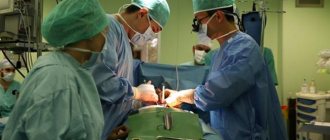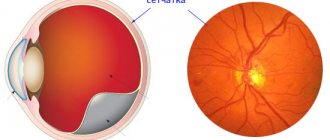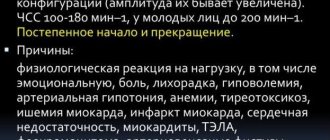Laser coagulation of nasal vessels is a surgical intervention involving cauterization of vessels located on the nasal septum using laser radiation. Our clinic has everything necessary for successful laser vasotomy in Krasnodar. During the procedure, in order to evaporate pathological cells, the specialist directs the rays precisely to the affected area. According to our statistics, the operation helps to heal and restore the normal functioning of the mucous membrane of the nasal passages in 98% of cases of the total number of interventions performed.
The main advantages of laser coagulation
Laser coagulation is one of the minimally invasive techniques that have a number of advantages over conventional surgical interventions involving soft tissue incisions:
- after the operation there is no need for nasal tamponade;
- with laser vasotomy, the risk of bleeding from the vessels in the nose is eliminated;
- During the procedure, the vessels are sealed, so their rupture is impossible;
- the operation lasts 15-45 minutes;
- very small wounds remain on the surface of the mucous membranes of the nose after the procedure;
- nasal breathing is completely restored within three days after the procedure.
A huge advantage of laser coagulation is a short rehabilitation period. On average, it lasts no more than seven days. After the operation, patients are under the supervision of our specialists for about half an hour and then sent home.
Vasomotor rhinitis treatment
The ENT specialist proposed surgical treatment of vasomotor rhinitis - cauterization of the nasal mucosa using the latest device for bipolar radiofrequency-induced thermotherapy Celon Elite ESG 200 Olympus (Japan).
Cauterization of the nasal mucosa helps eliminate nasal congestion for a long time, and not temporarily, like vasoconstrictor drops (the effect after surgery lasts for years). The device for cauterization of the nasal mucosa Celon Elite ESG 200, which is used in the Dial-Dent clinic, is one of the best today, as it ensures an effective and safe procedure thanks to automatic control of tissue heating, the use of a disposable electrode and point exposure (details read about the Celon Elite device here).
One procedure of cauterization of the nose is enough for the “stuffy nose for years” condition to go away and the feeling of a full life, full of smells and tastes, to return.
Who needs to have the procedure?
The main indications for laser coagulation of nasal vessels are pathological conditions of the capillaries of the nasal passages, which are accompanied by frequent bleeding:
- chronic inflammatory processes of the nasal passages with thinning of the mucous membrane, sinuses, nasopharynx (chronic rhinitis, sinusitis);
- congenital and acquired curvature of the nasal septum;
- individual features of the structure of the capillary network in the nose;
- regular exposure to adverse environmental factors, as well as inhalation of dust and toxic substances at work;
- hypertonic disease;
- hormonal imbalance, chronic fatigue, stressful situations;
- hypovitaminosis conditions;
- long-term use of blood thinning medications.
A serious reason for surgery is frequent relapses of bleeding from the nasal cavity, which as a result can provoke the development of anemia, persistent arterial hypotension and even a state of shock.
What is treated in the clinic using radio wave vasotomy
In otorhinolaryngology using this technique:
- Polyps in the nasal cavity, adenoids, tonsils, and papillomas are removed.
- They treat vasomotor and hypertrophic rhinitis, nosebleeds, snoring, granulosa pharyngitis, chronic tonsillitis.
- Eliminate neoplasms on mucous membranes and skin.
DAY CARE SERVICE
Treatment in the clinic using radio wave vasotomy is very low-traumatic, virtually painless, and is easily tolerated by all patients. There is no rehabilitation period, which is very important.
Are there any contraindications?
Like any other operation, the procedure for laser coagulation of nasal vessels (laser vasotomy) has a number of limitations, including:
- acute inflammatory processes in the body, regardless of their location and degree of complexity (surgery for respiratory and viral infections is postponed until the patient’s general health condition is normalized);
- diseases that are accompanied by blood clotting disorders;
- the presence of menstrual flow in the woman at the time of the manipulation.
Before the procedure, the patient must be examined by the attending physician, who not only assesses the degree of abnormalities in the nose, but also excludes the presence of contraindications in the patient.
Recovery process
The rehabilitation process, as a rule, does not exceed 2 weeks. To accelerate the regeneration of mucosal tissues, it is recommended to use special ointments. You should also carefully remove the crusts that form during the healing process.
To prevent infection of the operated mucosa, the patient should use antiseptic rinsing solutions. Warming the nose, intense physical activity and strong nose blowing are prohibited.
Compliance with medical recommendations will reduce the duration of rehabilitation and minimize the discomfort that accompanies healing.
Preparing for surgery
Despite the low-impact nature of laser coagulation, doctors at our clinic approach its preparation with the utmost seriousness. First, the patient is scheduled for a consultative visit to a specialist, where he determines the indications for correction, explains to the patient the essence of the future intervention and warns about the likely consequences.
Before surgery, each patient at the clinic must pass the prescribed tests and, if necessary, undergo a diagnostic examination. After all this, the specialist conducts a second consultation and sets a date and time for the procedure.
In the process of preparing for surgery, the patient is prohibited from:
- drink alcohol;
- take medications to thin your blood.
It is very important to listen to all doctor's recommendations. Otherwise, the risk of complications increases several times.
Recovery Features
Rehabilitation after the procedure includes several rules:
- Avoid physical activity: running, exercise, swimming.
- Avoid muscle tension in the nasal cavity, such as blowing your nose.
- Avoid mechanical impact, including friction and attempts to remove crusts yourself. Their removal risks further bleeding and an increase in the recovery period.
- Use prescribed agents that promote the restoration of mucous membranes: petroleum jelly, sea buckthorn oil, saline solutions (Aquamaris, Aqualor).
- Visit an otolaryngologist in a timely manner for examination.
- For a period determined by the doctor, do not visit baths and saunas, and also do not drink alcoholic beverages.
In Moscow, specialists from medical institutions use all of the above methods. The variability of prices for various types of procedures depends on the chosen treatment method. In addition, services included in the same category may cost differently depending on the level of the organization and the brand of equipment used. Thus, each patient can choose a procedure that suits their cost.
Progress of the operation
Our clinic employs the best specialists in the city of Krasnodar. Before surgery, the patient's blood pressure is measured again and the procedure is explained. The manipulation is performed in the operating room under local anesthesia. Patients with a vulnerable psyche are given sedatives.
During the operation:
- the patient takes a comfortable vertical body position with the head end raised;
- breathing should be done through the mouth, which will prevent vapors from entering the lungs;
- if necessary, during laser vasotomy manipulation, a smoke evacuation device operates;
- laser cauterization occurs inside the nasal concha without damaging the integrity of the mucous membranes and cilia;
- if necessary, the operation is performed under the control of endoscopic equipment, which also allows one to evaluate the results of the correction performed.
Laser coagulation of blood vessels in the area of the nasal septum is an absolutely painless procedure. Our surgeons always warn patients that during the procedure they may feel some discomfort or a slight tingling in the nose. Such manifestations are normal and do not pose a threat to human health.
How does cauterization occur?
The classic operation usually follows the following algorithm:
1. The doctor performs anesthesia.
2. The electrode is placed into the nasal passage cold.
3. It is pressed tightly to the mucosal area and current is applied.
4. The heated device is moved forward, working through the mucous membrane (outwardly it resembles a furrow).
5. After treating the required area, the current supply is stopped, the cautery is removed without stopping the movement in a cold state.
The insertion of the device and the operation as a whole proceed under visual control and do not require additional control.
Indications for removing spider veins on the face
Pinpoint spider veins;
Dilated capillaries;
Thin vascular network;
Cuperosis;
Rosacea (in combination with the main treatment of the disease).
When the blood vessels located on the surface of the skin dilate, a red mesh appears - spider veins, or telangiectasias. The reasons for the appearance of blood vessels on the face can be:
Hereditary factors;
Thin and sensitive skin;
Skin trauma;
Use of alcohol-containing products and care products containing acids;
Use of a number of drugs;
bad habits: smoking, drinking alcohol.
Violation of skin aesthetics associated with the appearance of noticeable blood vessels is the basis for visiting a cosmetologist.
Lasers and radio wave instruments
For example, the German diode laser CERALAS50, based on the semiconductor material gallium arsenide, generates radiation with a wavelength of 980 nm. An important parameter of such a laser is the laser radiation wavelength of 980 nm. The specificity of otorhinolaryngological operations is work on tissues with abundant blood supply. Laser radiation with a wavelength of 980 nm is maximally absorbed by blood hemoglobin, which is the main component of human soft tissues, so the radiation is absorbed in the surface layers, reducing the risk of damage to underlying organs, providing a good hemostatic effect.
The same pronounced hemostatic effect is ensured by the use of a radio wave instrument. The electromagnetic field generated by the COBLATOR-2 device coagulates edematous vascular tissue with minimal blood loss during surgery.
To carry out the procedure, local superficial anesthesia is sufficient, which completely eliminates possible discomfort during the intervention. Postoperative tamponade is usually not required, and the risk of scar formation is minimal. The procedure is well tolerated and can be operated on an outpatient basis. The advantages of laser and radio wave operations, such as low trauma, bloodlessness, and accuracy, are gaining increasing recognition among specialists and patients.
| The review was prepared by Candidate of Medical Sciences, ENT doctor of the highest category, Pomukhin Dmitry Valerievich Member of the German Scientific Society of Otorhinolaryngology, Head and Neck Surgery, Member of the ENT Institute Georges Portmann (France) ENT Department, Laser Surgery Center of the Road Clinical Hospital of the North Caucasus Railway Tel.: 238- 21-57 |








